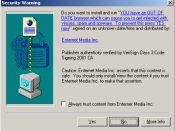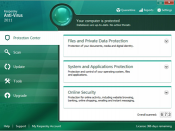Jack walked through the door after a long hard day at work. He went straight to his computer and sat down, as his seminar would soon start in a matter of 5 minutes. He popped open his laptop and hit the power button. As soon as it turned on and Microsoft Windows XP appeared on the screen, he felt as his pulse started to increase and a feeling of nervousness flustered over him, wondering what he would do now as a small rectangular box appeared on his screen conveying the unfortunate message that most people around the world encounter on a daily basis, "You have a virus!" He began to wrack his brain thinking of what he knew about the infamous topic of network security so that he could try and fix this problem; after all he is pursuing a degree in Information Technology. As he went through his own hard drive in his brain he came across all of the things he knew about network security that might help him not only fix his current problem but prevent any other threats that might occur in the future.
In the past, network security was not considered to be a significant issue. The most you would expect from turning on your computer was maybe a small virus. Not in today's world, just from turning on your computer and logging on to the internet you can expect anything from a virus-to-spyware-to-hackers-to-spam. With increased technology comes increased vulnerability, which in return calls for increased security. Preventative measures are in use to keep the ever-rising issue of network threats under control. "Basic types of attacks that are out there today are attempts to gain access or discover information about remote computers, otherwise known as probes or scans, account compromise which is the discovery of...


